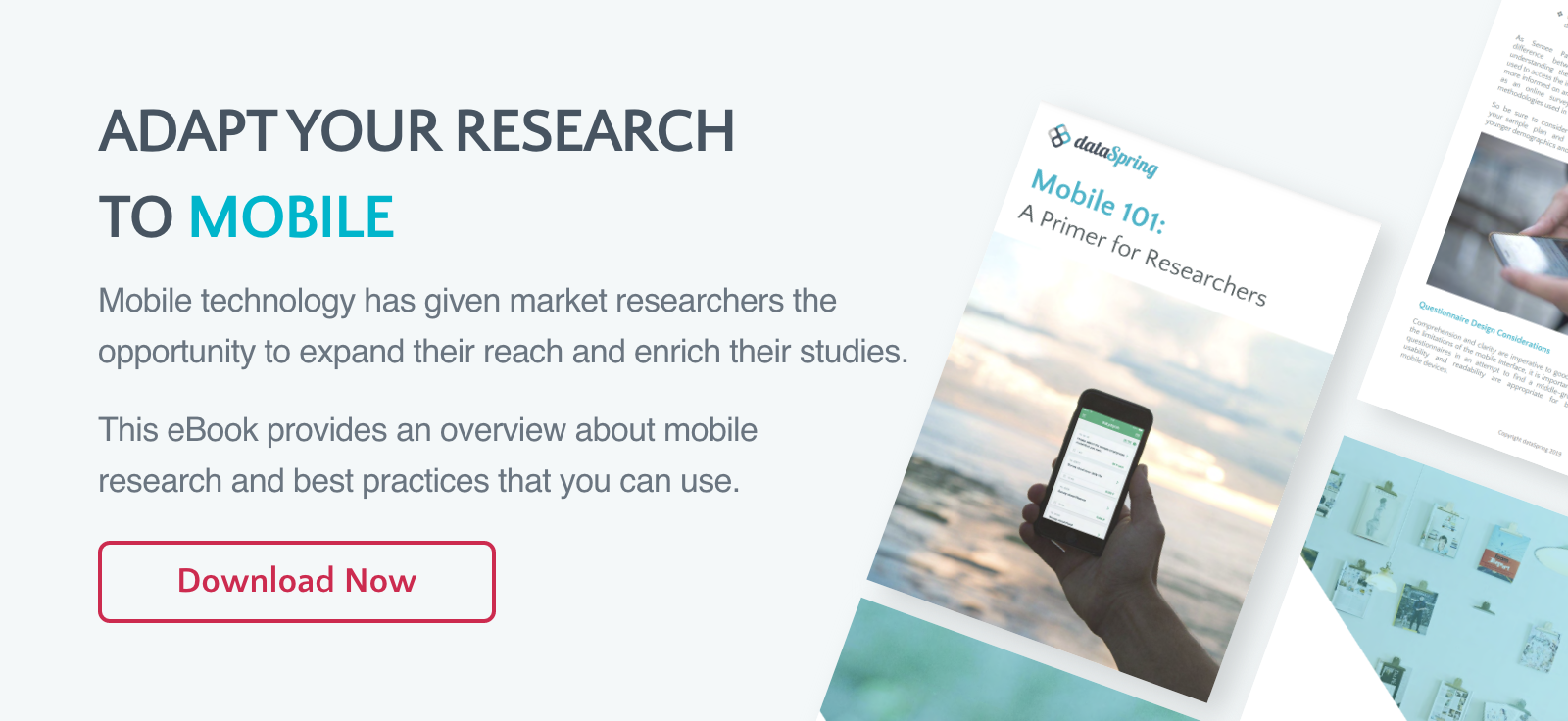Let's take a quick look at some studies to check if mobile research surveys in Asia do work.

Technology has fast-tracked the development of surveys as market research tools, transitioning from traditional paper-based surveys and phone surveys to online and mobile surveys. With each new format comes an increase in reach and efficiency as well as the decrease of cost in executing projects.
Mobile research surveys have become very popular methods for data collection worldwide due to the number of possible respondents and the convenience of conducting them. Currently, there are 3.986 billion active mobile internet users worldwide, which means that one in every two people can access the internet on their mobile devices. Additionally, a recent survey covering 170,000 internet users across 32 different markets mentioned that roughly 80% of online adults have a smartphone and this is expected to increase in the future. Mobile devices are starting to complement, if not outright replace, desktop computers when it comes to checking emails, accessing social media, and taking part in surveys.
Mobile research has indeed become one of the more prominent tools in market research, but can it be effective in Asia, specifically in the Asia Pacific region?
In terms of possible reach, mobile research in Asia is a gold mine. According to GSM Association’s Mobile Economy Asia Pacific 2019 report, the region has been the biggest contributor to global subscriber growth in recent years and still has room for growth, with more than 2.8 billion unique mobile subscribers, which translates to 72% penetration rate of the total population in the region. Mobile internet penetration has reached 45% of the entire population in 2018, and it is projected that 62% of mobile users will have an internet connection by 2025. A Statista report mentioned that mobile internet traffic in Asia accounts for almost two-thirds of global traffic. Additionally, a joint Google and Temasek annual report concluded that 90% of the digital users in Southeast Asia use mobile devices as main points of access to the internet.
With improving mobile internet access in Asia, there is a bigger chance that market researchers can get authentic sample data that represents the entire population. In fact, more and more Asians are starting to participate in mobile surveys. According to a study by B2B International, the markets with the highest levels of survey response rates are in Asia, most especially in Malaysia, Indonesia, and Singapore, where there are high rates of mobile-based survey taking. The study points out that these markets usually see a 15-30% mobile device participation for B2C studies and 5-10% for B2B studies.
Simply put, mobile research surveys can be very effective in Asia due to the growing mobile internet user base. With more Asians from all walks of life connected to the internet through their mobile devices, market researchers can have a bigger chance to get data that can help their clients get the best marketing insights. The usage of mobile devices is bringing new exciting opportunities in market research data collection in Asia.
Due to advances in mobile device technology and widespread adaption of mobile phones for online access, especially in Asia, mobile research has become a powerful tool for market researchers to harness. If you want to know more about mobile research, how to enhance your methodology toolbox, and Asia mobile panels, check out our Mobile Research Essentials page.


 Download Panel Book
Download Panel Book


